Relevance in Project-Based Learning – Connecting History to Real World Issues
Pia, our 7th grade Spanish Language Arts and Dominican History (Sociales) teacher, cares deeply about her students and is constantly trying new strategies in order to meet their needs. Recently, Pia realized that — although she felt successful in helping students develop a love of reading and writing in her LA class — she was failing to motivate them in Sociales because they didn’t see the relevance of their learning.
As a first step to solving the problem, Pia met with her students to ask how they felt about the class. Because they trusted her, they were very honest: “It’s boring. We hate it. Sociales class is always the same. We want something that will help us in the future.” They were emphatic in stating that the Sociales classes are very repetitive, that every year they talk about the Tainos, independence and the “Fathers of the Nation”. Pia considered her options. How could she connect her Dominican curriculum to the problems going on in the world today?
Knowing that project-based learning (PBL) empowers students by letting them choose to work with real-life projects, she decided to try using this strategy to motivate her class. Once they chose a topic, she would look for connections.
How the project evolved
Pia wanted students to work on both an individual piece of writing and, at the same time, create a group project that would impact society. For inspiration, she looked up ideas in PBL Works, an amazing site filled with support and inspiration for projects. Pia found a project about political activism and thought that it would be a good place to begin.
She started out by asking students, “Do you think you can be agents of change in our community?” They began by considering local problems. They made a list of issues that they saw in Dominican society, including garbage, transit, robbery, and corruption. They had a conversation and Pia asked if the students thought they could help to make a change. Some said yes, others said no, but Pia didn’t feel any real excitement coming from students.
Then her learners went on a tangent and began discussing what truly interested them at the moment: the war that had just begun between Russia and Ukraine. A student put a map on the table and asked where Ukraine was and where Russia was. Suddenly there was animated discussion and enthusiasm in the room. The students agreed that, although they couldn’t do anything about the war, they could educate people. Pia was convinced that if she truly wanted to motivate her students, this had to be the subject of their inquiry.
Creating learning goals
Pia decided that the project would be multi-disciplinary. In Spanish Language Arts, they would work on their writing skills for opinion articles. But she had to find a way to follow her student’s’ interests, while covering her curriculum. What Pia realized is that, because history repeats itself, there is always a way to make connections between current and historical events. The 7th grade Sociales curriculum deals with the Dominican occupation by Haiti and the DR’s fight for independence, so Pia would make connections to Russia’s attempt to occupy Ukraine and Ukraine’s fight for national sovereignty. Her students’ passion for the war in Ukraine should help them have a deeper understanding of their own country’s fight for independence.
Her content learning goals would include items from the Dominican curriculum:
- To read maps for information.
- To compare and contrast government bodies, the division of powers in representative democracy, and the constitution of a country.
- To compare and contrast the Haitian occupation of Dominican Republic with the Russian occupation of Ukraine.
- To analyze the positions of the invaders and the justifications they gave and the reactions of the invaded peoples and their governments.
- To compare the peace negotiations in the present and the intervention of other countries with the position of other governments in the case of the Haitian occupation
- To read news and current events with understanding.
- To define the sovereignty of a nation.
- To understand Govt systems (democracy, socialism, communism, dictatorship),
- To analyze how the political position of a country is reflected in their media and newspapers.
Although she would ensure that her students covered the Dominican curriculum, Pia thought the most important learning goals were the ones that had to do with her students’ mindset:
- To developed a sincere interest in what’s going on in the world,
- To become aware of human rights and how they are ignored in times of war.
- To discuss the complexity of war, seeing both sides to the problems.
- To feel empathy towards those that are involved in war.
- To grapple with the idea of being change agents and creating a movement.
- And above all, to feel empowered to make a difference in the world.
Setting the stage through questioning and research
In order to come up with a project, Pia knew her students would need background information about the war in Ukraine:
- She had them brainstorm a long list of questions they had about the Ukraine/Russia conflict and then each of them decided what they were most interested in and began to do individual or group research.
- Pia started each class by watching videos of what was actually happening in Ukraine and having group discussions.
- As students moved on with their inquiry. She asked them to create a visual of their research, such as informational Google slides, timelines of the war, maps of the invasions,
- Once they had completed their research, share their information with the group.
Her students decided that they’d like to present the information they found through an opinion piece (they all had very strong opinions about the war). They would each choose their own theme to write about. They chose to write about subjects like why they felt Ukraine should be allowed to be part of NATO, Putin’s hidden intentions in invading Ukraine, and the negotiations for peace between Russia and Ukraine. In Spanish Language Arts,. they analyzed exemplars of opinion pieces and then co-created a rubric to guide them in their writing.
Starting a student-driven movement
The students were working so hard, but how would this come together to be a large group project? How would they use their work to educate others?
Pia put this question to her students, and in response, all kinds of ideas came up: starting an Instagram page, writing a blog, and making a documentary, among others. There were some strong personalities in the group and it was obviously going to be difficult to come to a consensus. Pia gave them time to struggle with this problem. She knew that if she helped them solve it, they wouldn’t own the project. Then a student brought up the idea of starting a Movement for Peace in Ukraine. All of their ideas could contribute to the movement.
One class of 7th graders decided to put their opinion pieces together in a blog that could be shared through a QR code. The other class created a documentary, in which they would all share their information and opinions about the Russian invasion of Ukraine. One of our alumni came in to give them lessons on creating documentaries and to give them feedback on their work.
To make a movement, students started making ribbon bracelets with the colors of the Ukrainian flag. They passed these out throughout the school, explaining what they were for. Then they decided to expand their reach by creating small bags containing a bracelet, a card with their slogan, and QR codes to their blog and documentary. Parents and family members passed these out and shared the information on social media. Students spoke to store owners and asked them to offer them to their customers. Their movement had begun….
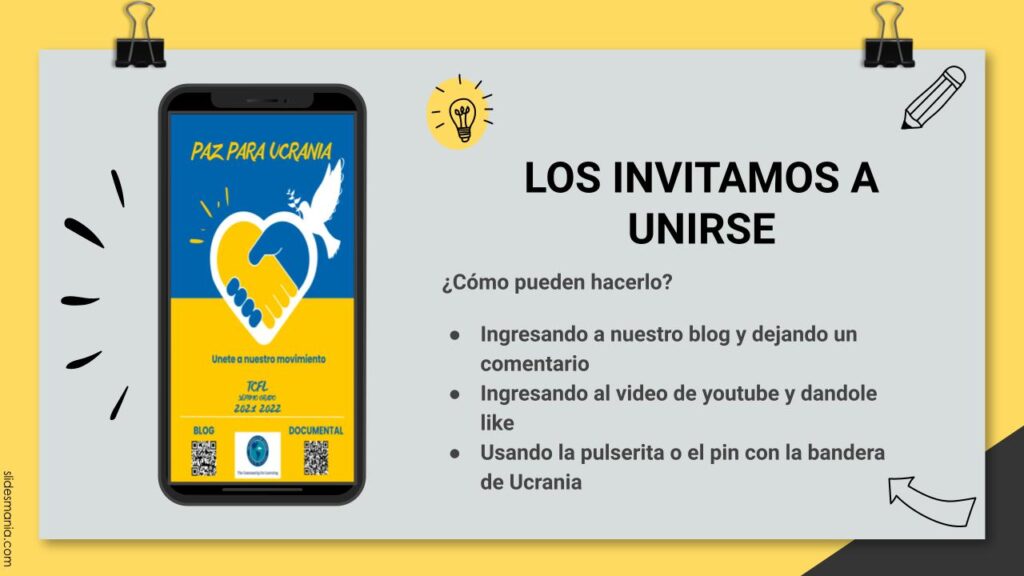
Translation: We invite you to join us. How? By reading our blog and leaving a message, by watching our video on YouTube and pressing “like”, by wearing the bracelet or the pin with the Ukrainian flag.,
Pia’s reflection
What was difficult
One of the difficulties that Pia encountered was managing time: some students worked much faster than others, so they all finished at different times. She resolved this by having the students who finished earlier research another question. But it wasn’t an ideal solution and left some students feeling that the project lasted too long. Next time she would come up with another way to work around this issue. One of her ideas is to create learning journeys that students can embark on once they finish their part of the project.
What went well
Students were enthusiastic about researching a subject that truly interested them. Because they were motivated and worked independently, Pia had time to conference with students who needed more support in writing their opinion essays. She was nervous about the workload that PBL would entail, but found that, on the contrary, her workload decreased:
- She didn’t spend hours planning lessons, but let the students guide the learning.
- She didn’t take work home to read and comment on, but sat with students during class to give them feedback.
One of the things her learners enjoyed was that at the end of each class Pia held a roundtable meeting where students could share their learning. These were animated discussions and everyone was involved. Next time Pia says she’d also like to have a wall where they could keep track of their thoughts and ideas.
But the highlight of the project was how driven the students were to create a movement. They were empowered by the feeling that their work was actually making a difference and they put themselves into it with passion.
Overall, it was the best Sociales class she’s ever had. Pia says, “The kids don’t want to go back to the old way of working. And I know I can’t go back to my old way of working. From now on, no matter what, my classes have to be related to what’s happening in the world.”

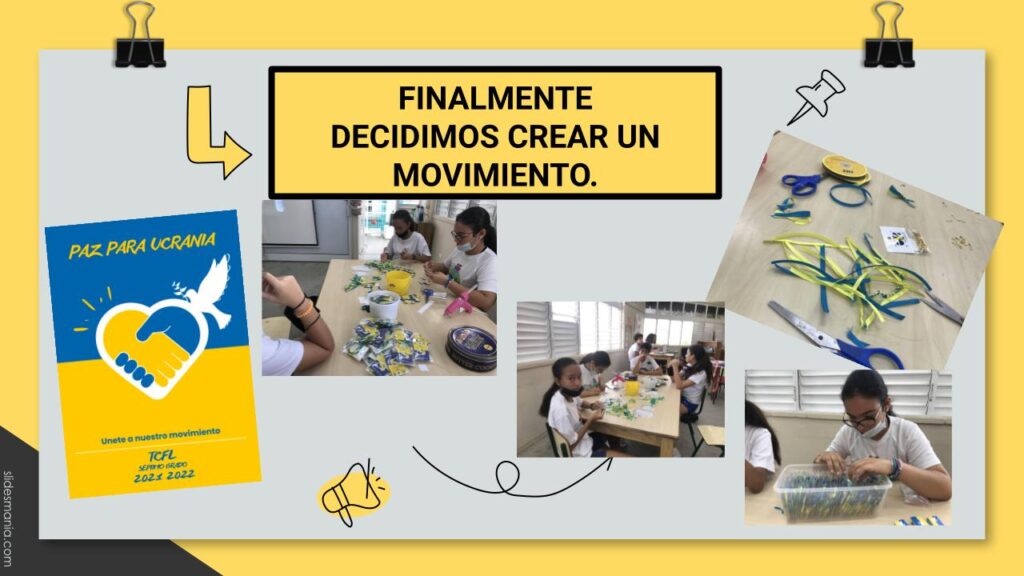
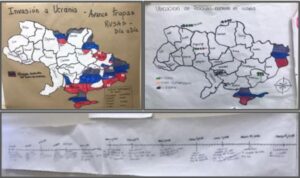
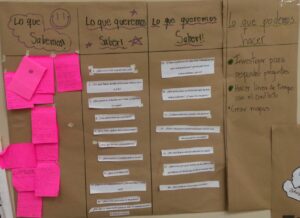
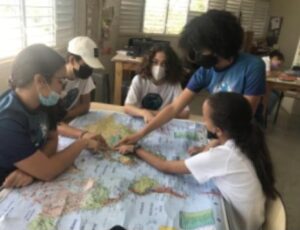
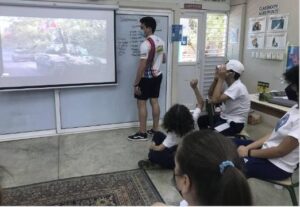

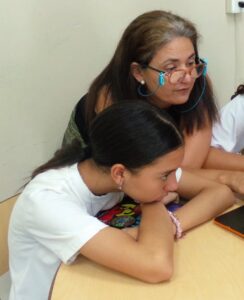
Leave a comment